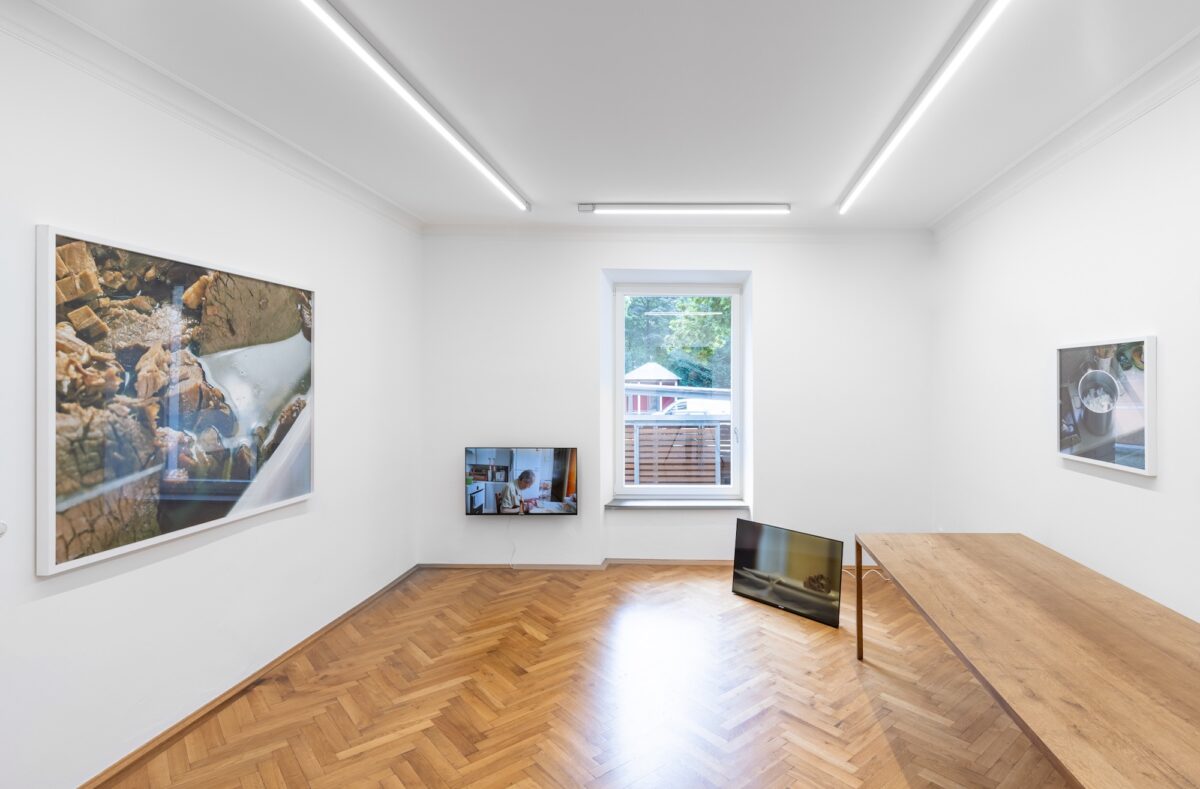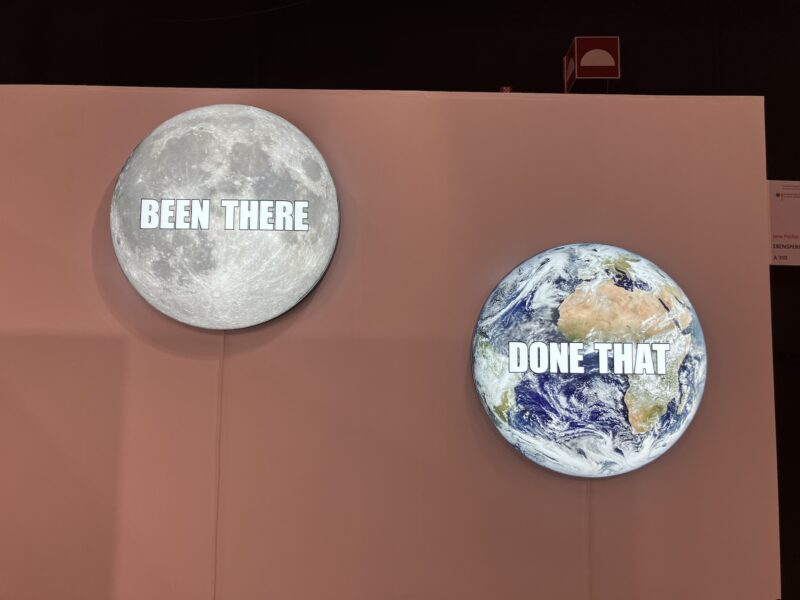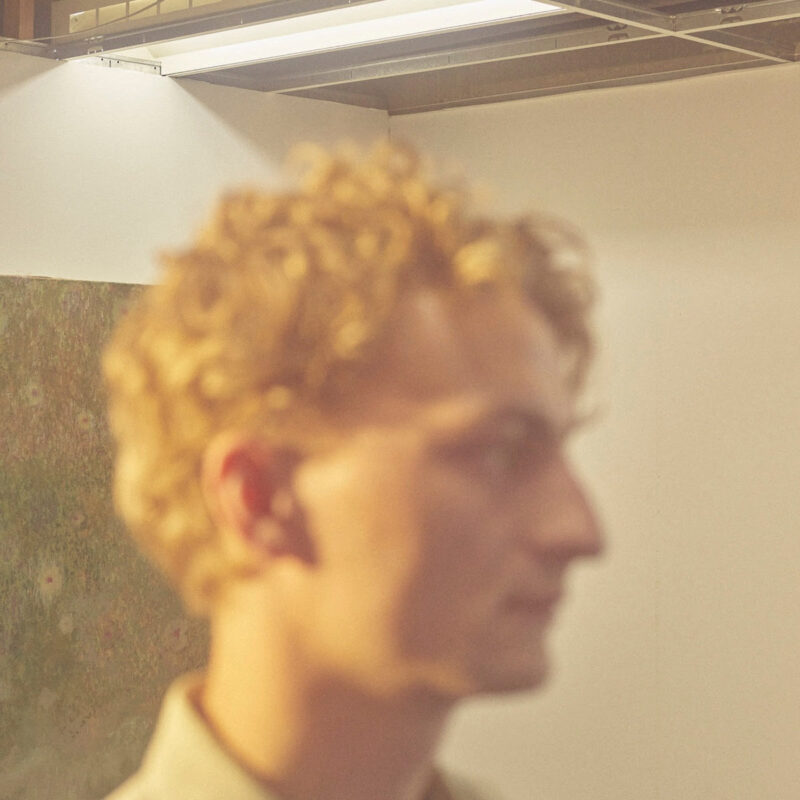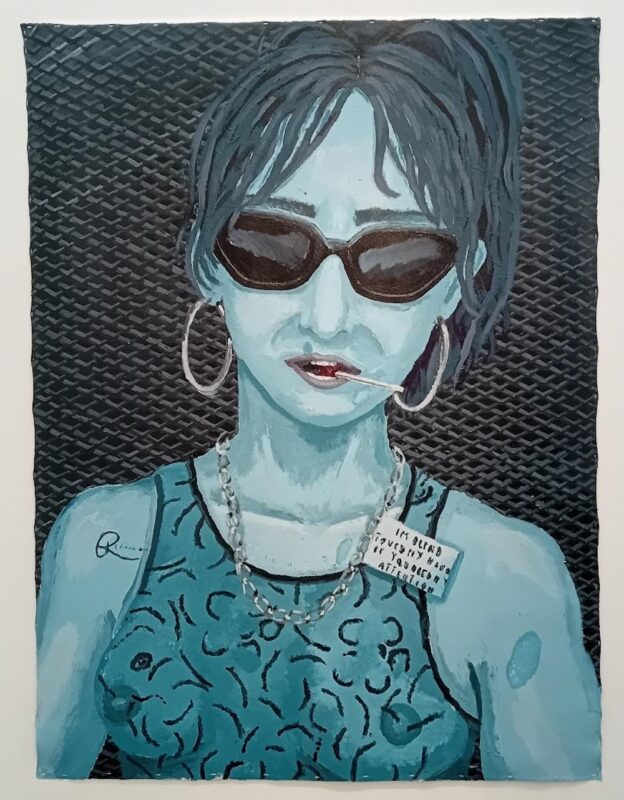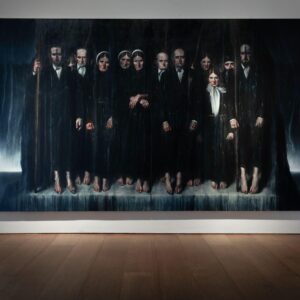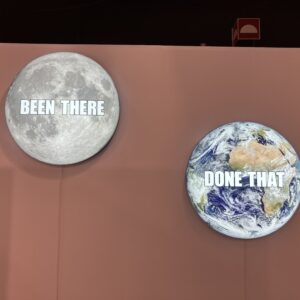Coming away from Various Others 2024, Munich’s international art ‘format’, I have been thinking about perception; how one comes to know the world and how artists work with this process of knowing.
Two exhibitions, held at what I am calling gallery-friends, sparked this ruminative thinking: max goelitz’s exhibition dirt, a duo show with Jenna Sutela and Pamela Rosenkranz in collaboration with Sprüth Magers, and Britta Rettberg’s Unlikely Outcomes. A feast for the eyes, regales us with stories, a solo presentation of work by Nikolas Ventourakis in collaboration with Callirrhoë, Athens. Very different in terms of the whats on display, both exhibitions made me think about the relationship between our sense of sight and how our bodies come to be in the world, be that by critically challenging the primacy of seeing to our epoch of screens or by conveying how even the most mundane of activities, once imaged anew, can provoke empathic thinking.
max goelitz with Sprüth Magers, Jenna Sutela and Pamela Rosenkranz: dirt
dirt is a theatre of fog. Earthy water vapours meet pink noise tears — those salted drops, constantly in the background of life, that mar the multisensuality of our existence and coexistence with more-than-human life forms.

Jenna Sutela’s Vermi Cell (2023) is the central protagonist, or at least the loudest actor, in this exhibitionary-play. Quite literally two mounds of compost, wrought with seedlings and earthworms, theatrically enclosed in a suede-like curtain, Vermi Cell fills the exhibition space with soft smoke, strobe-light crackles and what sounds like centipede jaz — think, one hundred little crazy legs creep-crawling over piano keys. More than a soily spectacle, all multisensory and worthy of a Story share, Sutela has engineered her compost heaps to create a decompositional battery; the work’s creaturely song, its rhythm, flow and the very intensity at which we hear this improv recital, is powered by an electrical charge released as the earthy piles do their thang: breaking down sensible matter. By embracing this ‘radically low’ technology Sutela and Vermi Cell demonstrate how life’s constitutive energy is always already operative below the tightly script surface of the world we see. Bleeding out from the isolation of its stage site, Sutela’s dirt decomposition not only makes life’s parts more perceptible but suggests that in privileging one sense system over all others human beings are losing the capacity to feel, and to be energised by, Earth’s charismatic charge.
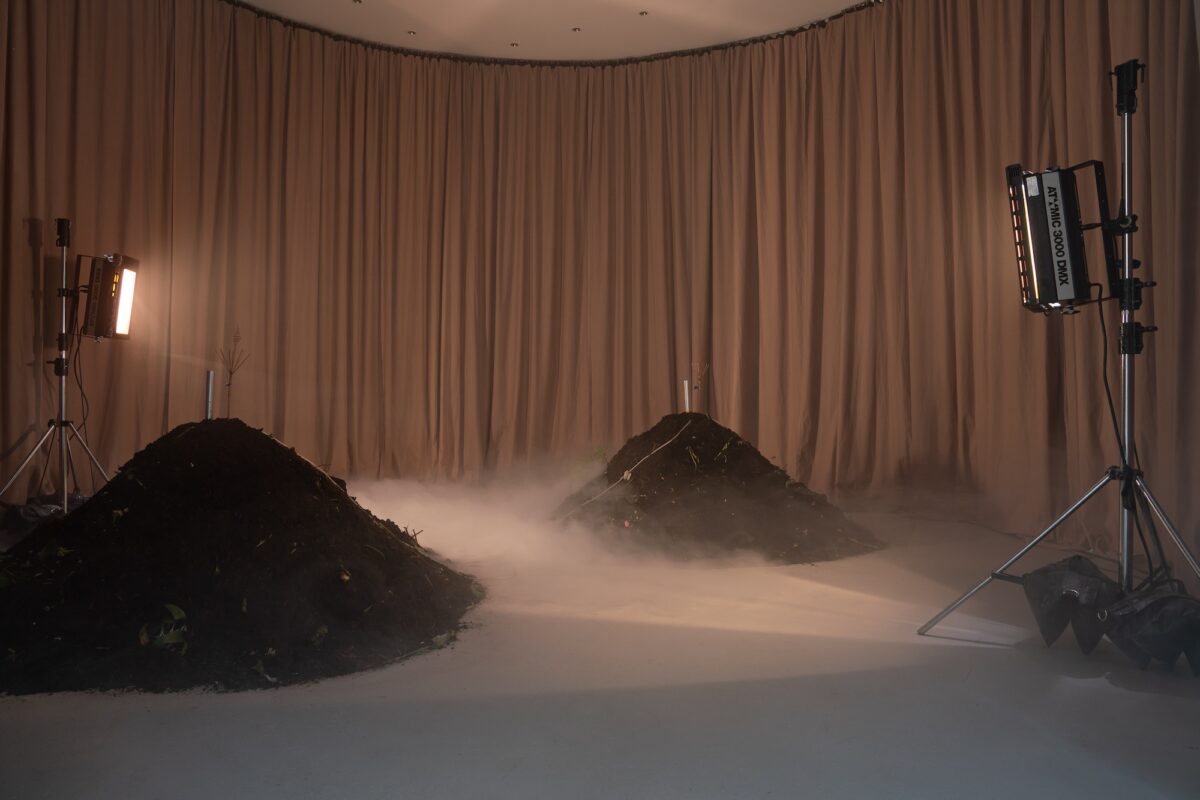
Pamela Rosenkranz’s painted prints complement this idea of human dissociation from Earthly emotion and empathy. dirt features artworks from two pink-fogged series: I Wish I Could Cry Blood (2021) and Anamazon (2021). Digital stock imagery forms the physical and thinkerly ground for the images in these series. The artworks from I Wish I Could Cry Blood — a line abstracted from a Lindsay Lohan tweet — each feature a single close-cropped eye, stretched and enlarged to sculptural proportions, staring numbly through a splattered pool of pink acrylic, the trace of its digital image repository part and parcel of the figure’s skin. Aesthetically, Anamazon slips into a closer dialogue with Sutela’s earthwork. Imaging an alamy photo of the Amazon Rainforest, doused in gestural layers of fleshy pink pus, the work directly alludes to the ways in which our perception of the world is mediated by the big boys of Silicon Valley; indeed, how our contact and abilities to empathise with the world around us is becoming an evermore screen-laden thing — it’s fitting that Rosenkranz’s artworks are pinned behind sheets of Plexiglass. Sitting before the large painted print peering through its flesh-toned foliage, Anamazon conveys how in an age of digital universality, an ambient storm of pink noise is not only alienating us from the natural world (read each other) but commodifying our worldly relationships by misting our emotive views of life.
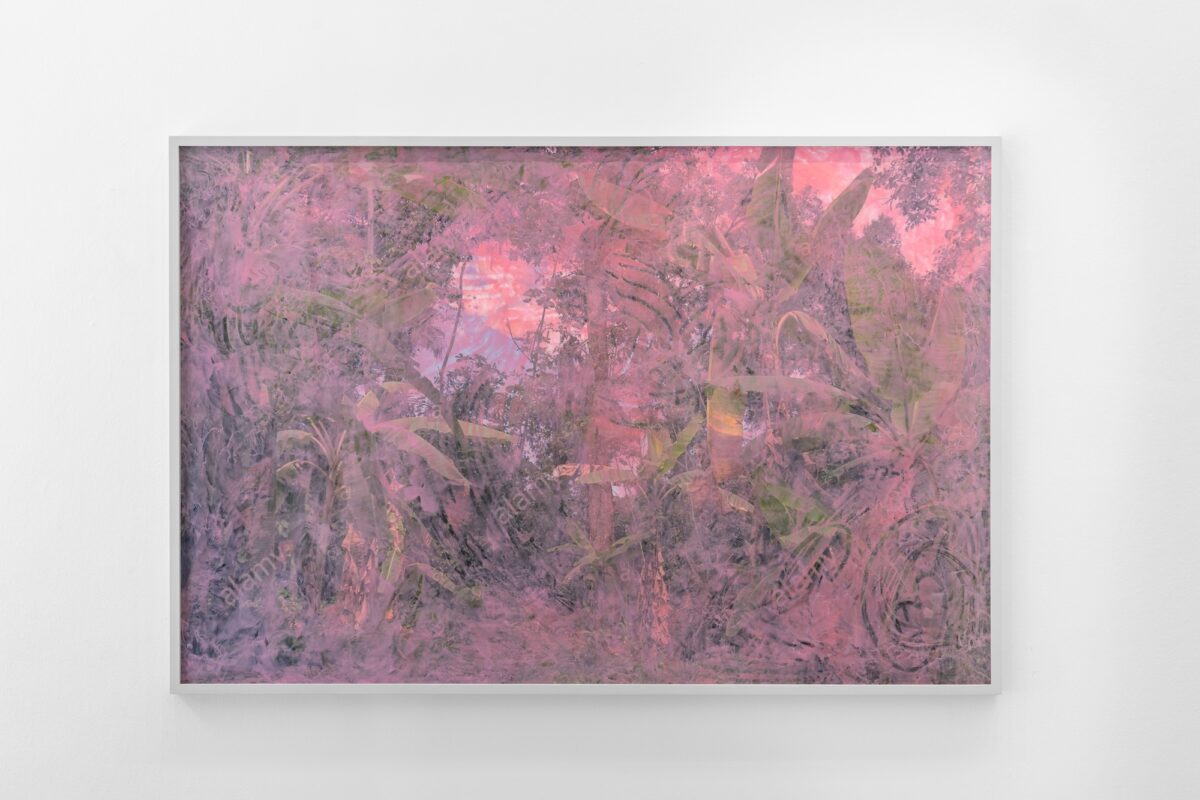
MORE: maxgoelitz.com/en/exhibitions/52-dirt-pamela-rosenkranz-and-jenna-sutela
Britta Rettberg with Callirrhoë, Nikolas Ventourakis: Unlikely Outcomes. A feast for the eyes, regales us with stories
Imagine Howard Hodgkin making a three-round honey sandwich. It’s a generous image: three slices of brown bread, each don with a thick impasto layer of Flora ProActiv and topped with an oozing zig-zag of squeezy honey; expressive and delicate and so so refined in its touching abstraction.
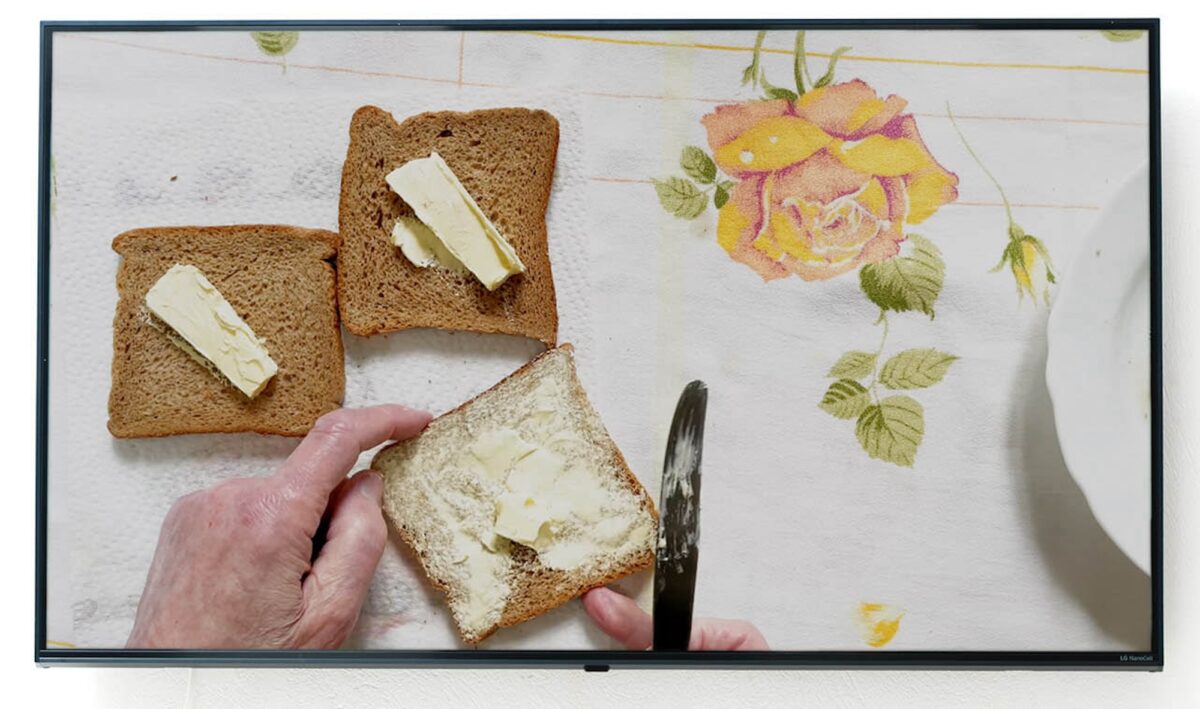
Each of the works in Nikolas Ventourakis’ solo presentation in Britta Rettberg’s ‘park’ space comes from his anachronous series Unlikely Outcomes — an archival series of lens-based material which toys with notions of memory: how memories are made, when they can find a form, as well as how memories can connect empathically beyond an isolated body, space and/or time.
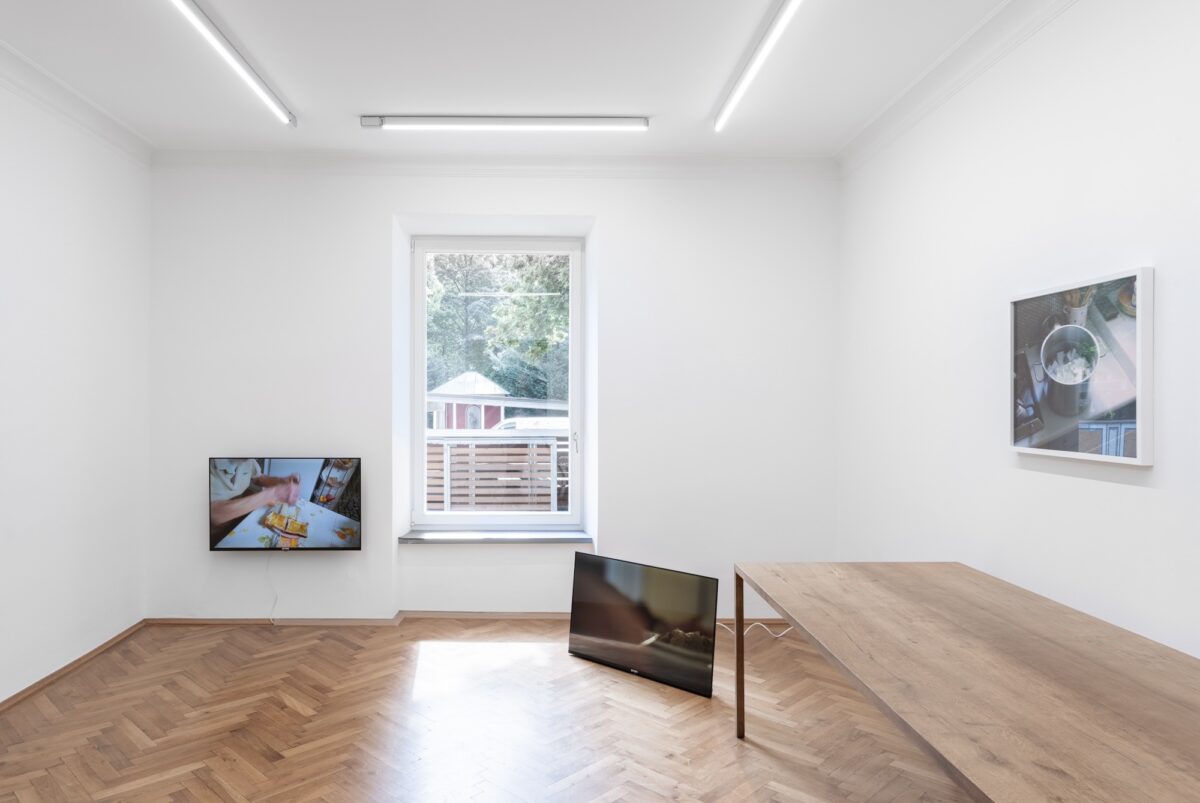
The 24-minute video Spread, alluded to above, is perhaps indicative of Ventourakis’ series and how he uses photography and video to create deeply introspective image worlds; universes where the intimacies of everyday life are remade, unfolding as emotional experiences which we all feel we can know, or which at least can resonate with and beyond us. One of two videos in the exhibition, which also includes some beautifully staged still-life photography — think the photographs of Thomas Ruff —, Spread, which was filmed in 1996 despite its artistic publication date of 2021, depicts Ventourakis’ grandfather preparing a meal in his boxy kitchen — again think Ruff for a stylistic interior queue. An utterly quotidian act, the video presents this daily ritual as something solemn and soul-touching; slow and quiet, the video mixes lingering semi-close-ups with more distant scenes all soaked in Autumn beige, a timeless tone; we see hands then a body at work creating from memory becoming memories, things to love and cherish. A liminal sense of dependency hovers softly in the background of Ventourakis’ video. And as I watch, feeling drawn into the film — I can almost hear the squelch of the protagonist’s knife slathering the bread —, the privacy of this moment transforms, becoming something expressive of the personal layers we each spread out to give our lives an empathic foundation. In unmooring this minor moment from life, Spread, as with the rest of this exhibition, elevates the personal and seemingly insignificant to something precious: a moment without fixity, one where we can perceive each other anew, sharing in the most common of our common existences.
